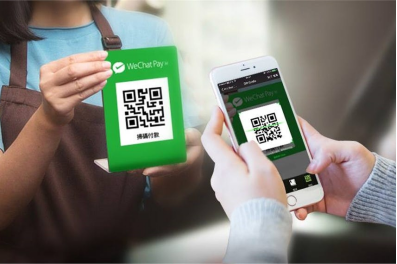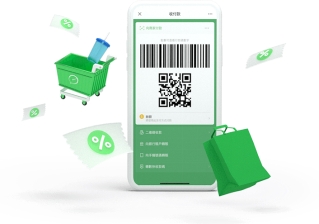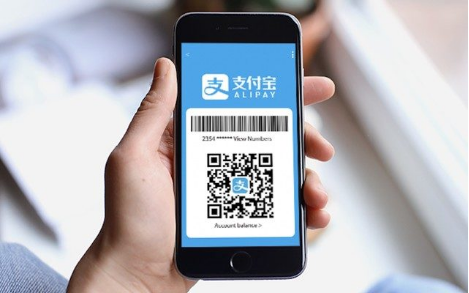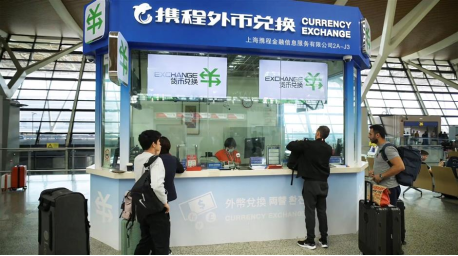Welcome to Beijing! I’m Chen.
Today I’m talking about one thing that most travelers would care about very much, that is, how to pay and how to exchange for currency in China.
Mobile Payment in China
Compared to the rest of the world, China has a very unique payment ecosystem. Almost all of the transactions and payments are cashless, but they are not done via credit cards, which is most likely the case in most foreign countries. The cashless payment in China is done via mobile payment, that is you link your bank accounts to mobile payment apps first, and then you finish all the payment via QR codes through the payment apps. WeChat and Alipay are the dominant players in this market, and either one would be enough for you to deal with most of the payments, but I still recommend you to install both the apps for a more convenient trip in China, the reason for which I would be sharing later.

How to set up mobile payment on your phone?
Before we get started, you need to download those 2 apps we mentioned, WeChat and Alipay, which are available via Google Play and iOS App Store (Recommended: download apps from the official app store).
Set up WeChat for mobile payment
1. Sign up WeChat (foreign phone number is also accepted).
2. Select “Me” in the bottom, and then select “Service”, and then “Wallet”.
3. Input your ID info (e.g. passport info, uploading pictures of passport or ID).
4. Add new bank card(s) (Follow the steps to verify the billing address, including entering an SMS verification code sent to your registered phone number at your bank). Visa, Discover Global Network, JCB and Mastercard are supported.
5. WeChat Pay is already set up. Each time you pay, you may need to input password (WeChat Payment Password you just set up, not the password of your bank card if you set them differently) or use fingerprint or face verification.

Some tips on WeChat Pay:
Transactions exceeding 200 CNY (approximately 27 USD) will incur a 3% handling fee. Transactions are conducted in CNY, and the exchange rate is calculated based on the exchange rates of card organizations and your card issuing banks.
Only shopping payment is supported. Other functions like money transfer among WeChat contacts are not supported by international bank issued cards.
Set up Alipay for mobile payment
1. Select “sign up” to register, choose international version. Foreign phone number is also accepted.
2. Tap “Add now” on the home page to add your bank cards and follow on-page instructions to complete the process. Visa, Discover Global Network and Mastercard are supported.
3. Tap “Scan”, to scan the merchant-presented QR code for payment. You could also tap “Pay/Collect” and then present your QR code to the merchant/business for payment (both are the same for payment, just depending on the preference of the businesses).

Some tips on Alipay:
Transactions exceeding 200 CNY (approximately 27 USD) will incur a 3% handling fee. Transactions are conducted in CNY, and the exchange rate is calculated based on the exchange rates of card organizations and your card issuing banks.
Only shopping payment is supported. Other functions like money transfer among Alipay contacts are not supported by international bank issued cards.
Why do you need both apps on your phone?
Although either app (WeChat or Alipay) is enough to handle your payment in China, there are some functions that are unique to each app. For Alipay, the biggest unique function is the transportation QR code used to ride the bus and subway in China, while WeChat is the most frequently used communication app in China (somewhat similar to WhatsApp, iMessage or Messenger).
To use Alipay for public transportation, you just need to tap “Travel” on the homepage (If “travel” doesn’t show up, you need to tap the top left to change the location to one of the Chinese cities for that Transport option to show up), and then select subway or bus accordingly (yes, those two don’t share the same QR code). Finish the identity verification according to the instructions. And now you could scan the QR code at the entrance and exit gate (also scan the code for getting on and off the bus). Pls be noted that each city also has its own QR codes for the bus and subway. So, if the location showing up in Alipay isn’t right, you need to manually change the place to get the right QR code.
Credit/Debit Card Payment in China
In fact, most hotels, chain retailers and restaurants or stores in shopping malls in Beijing also support visa and MasterCard. So for those who want to pay via credit cards instead of mobile payment, congratulations. However, since mobile payment is so dominant in China, you may have to mention it to the clerks who mostly regard mobile payment as the default option for most clients. And also, despite of that being true to most stores in most part of Beijing, most independent businesses or self-employed businesses may not support that, which could be the major condition in a tourist site.
Exchange for Currency
Even though most transactions are cashless in China, I still recommend you to prepare some local currency on hand. Not too much but you need have some, just in case. And I recommend you to do that in advance at a local bank branch before you depart for China for 2 reasons.
First, the most convenient place to do that is at the foreign exchange counters at the airport. You could find those counters at every international airport when you arrive and it’s very convenient. But the convenience comes with a cost. The exchange rate is really not ideal. Generally the exchange rate at those counters would be at least 10% more expensive than those you’re going to get at bank branches. By the way, some hotels also provide foreign currency exchange service (also at a higher price).

Second, most bank branches in China offer foreign currency exchange service and the exchange rate is really nice. However, it would take you much more time to find a bank branch and then wait for the queue. And bank branches are only open during 9 AM to 5 PM and some may even close earlier, which is just the precious day time periods for visiting tourist sites.
So get ready before you set out. But if you are just in some urgent situations, don’t worry you will find those exchange counters or bank branches easily. By the way, Bank of China covers the most foreign currencies among all the commercial banks in China,.
So now we’ve went through all the details about the payment and currency exchange, I hope you find that information helpful. Wish you a very happy journey in China! See you.